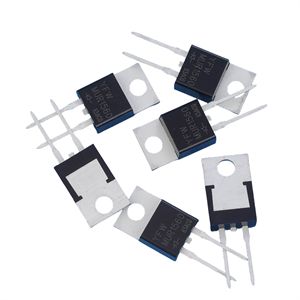Date:2024-10-11 Categories:Product knowledge Hits:317 From:Guangdong Youfeng Microelectronics Co., Ltd
What is MOS transistor?
MOS transistor is a metal oxide semiconductor field-effect transistor, or metal insulator semiconductor. The source and drain of MOS transistors are interchangeable, forming an N-type region in the P-type back gate. In most cases, these two regions are the same, and even the alignment of the two ends does not affect the performance of the device. This device is considered symmetrical.
What is a transistor?
Strictly speaking, a transistor refers to a single component based on semiconductor materials, diodes, transistors, field-effect transistors, thyristors, etc. made of various semiconductor materials. Transistors sometimes refer to the transistors of a crystal.
Transistors are divided into two categories: bipolar transistors (BJTs) and field-effect transistors (FETs). A transistor has three poles; Bipolar transistors have three poles, namely emitter, base, and collector. Field effect transistors have three poles: source, gate, and drain.
Bipolar transistor refers to a type of transistor commonly used in audio circuits. The two poles are derived from the relationship between the current systems flowing through two semiconductor materials. Bipolar transistors can be classified into npn or pnp types based on the polarity of the operating voltage.
The working principle of bipolar transistors and MOSFET transistors is the same. Fundamentally, both of these transistors are charge controlled devices, which means that their output current is proportional to the charge formed by the control electrode in the semiconductor. When these devices are used as switches, they must be driven by a low impedance source that can provide sufficient input and output currents to achieve rapid insertion and extraction of controlled charges.
From this point of view, during switching, MOSFETs must be "hard" driven in a manner similar to bipolar transistors to achieve comparable switching speeds. In theory, the switching speed of bipolar transistors and MOSFET devices is almost the same, depending on the time required for charge carriers to transfer in the semiconductor region. The typical value of power devices is approximately 20 to 200 picoseconds, depending on the size of the device.

Previous: Classification, Structure, and Principle of MOSFET
Next: Using voltage inspection method to quickly locate fault points in integrated circuits